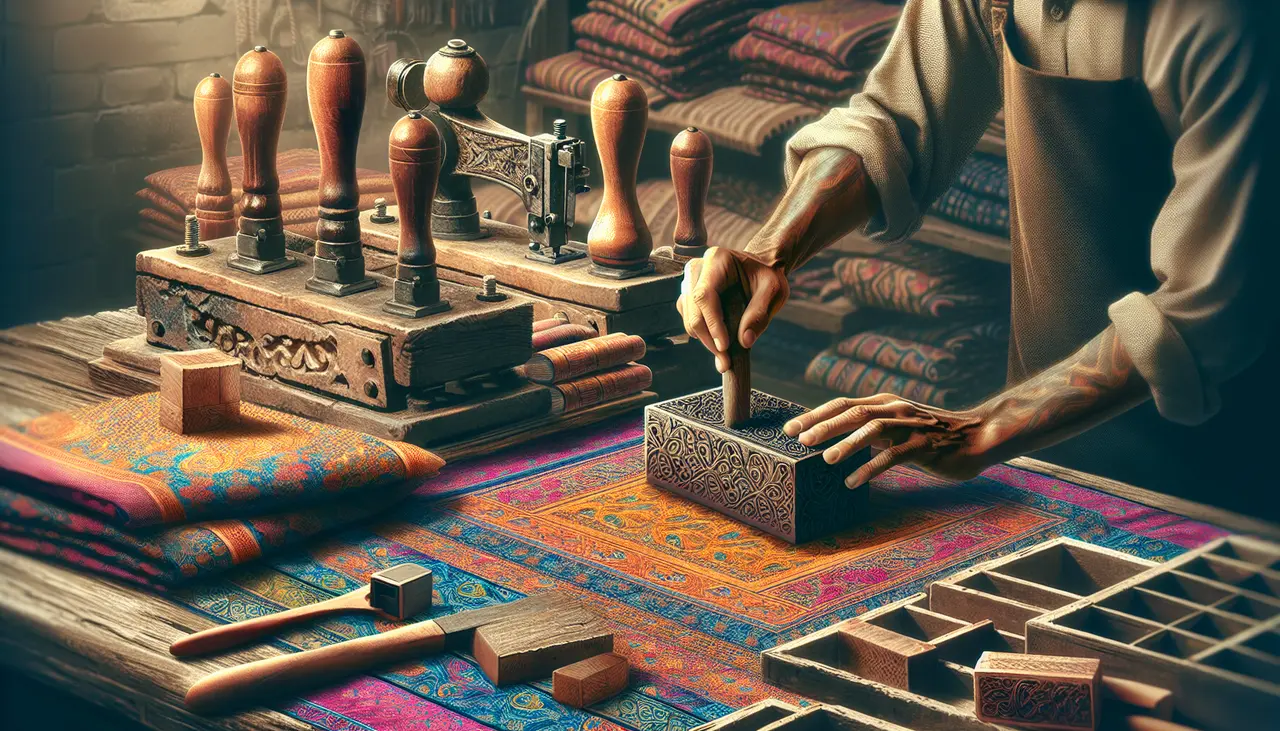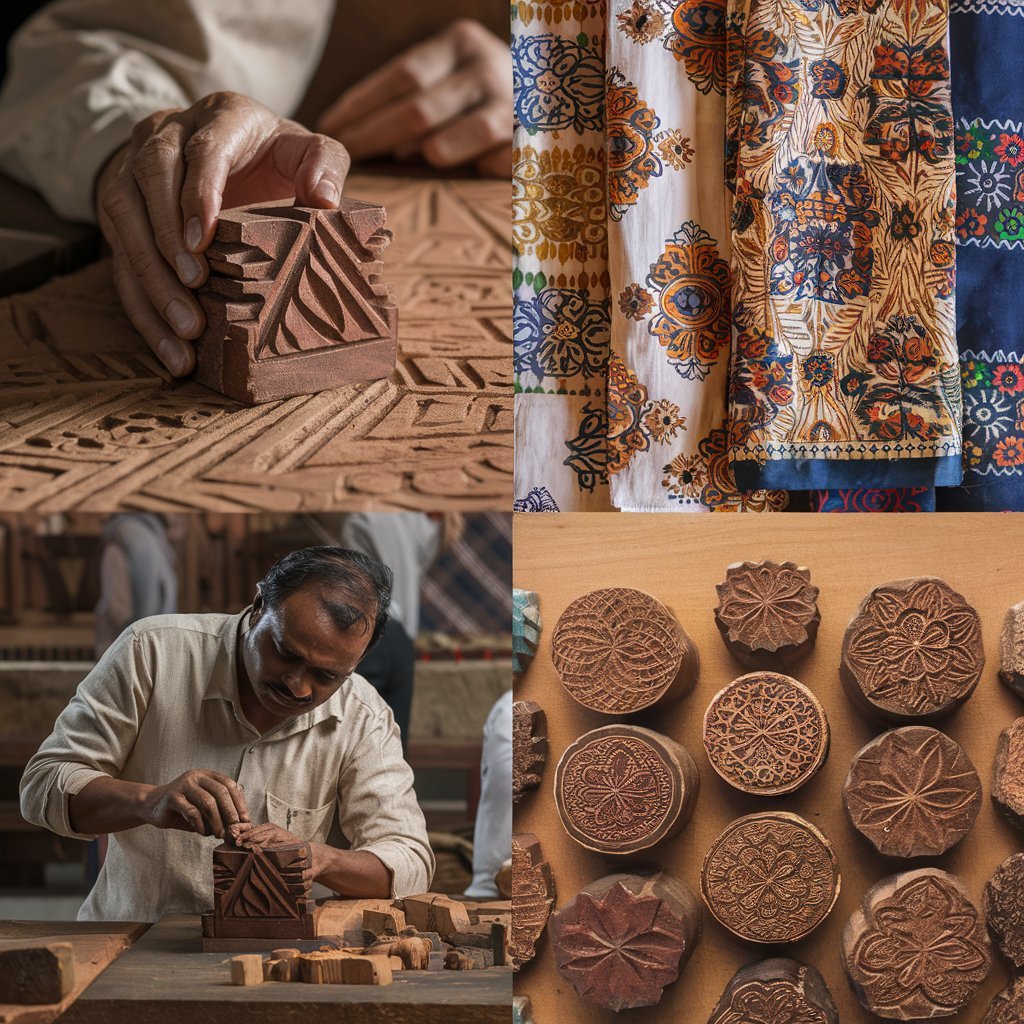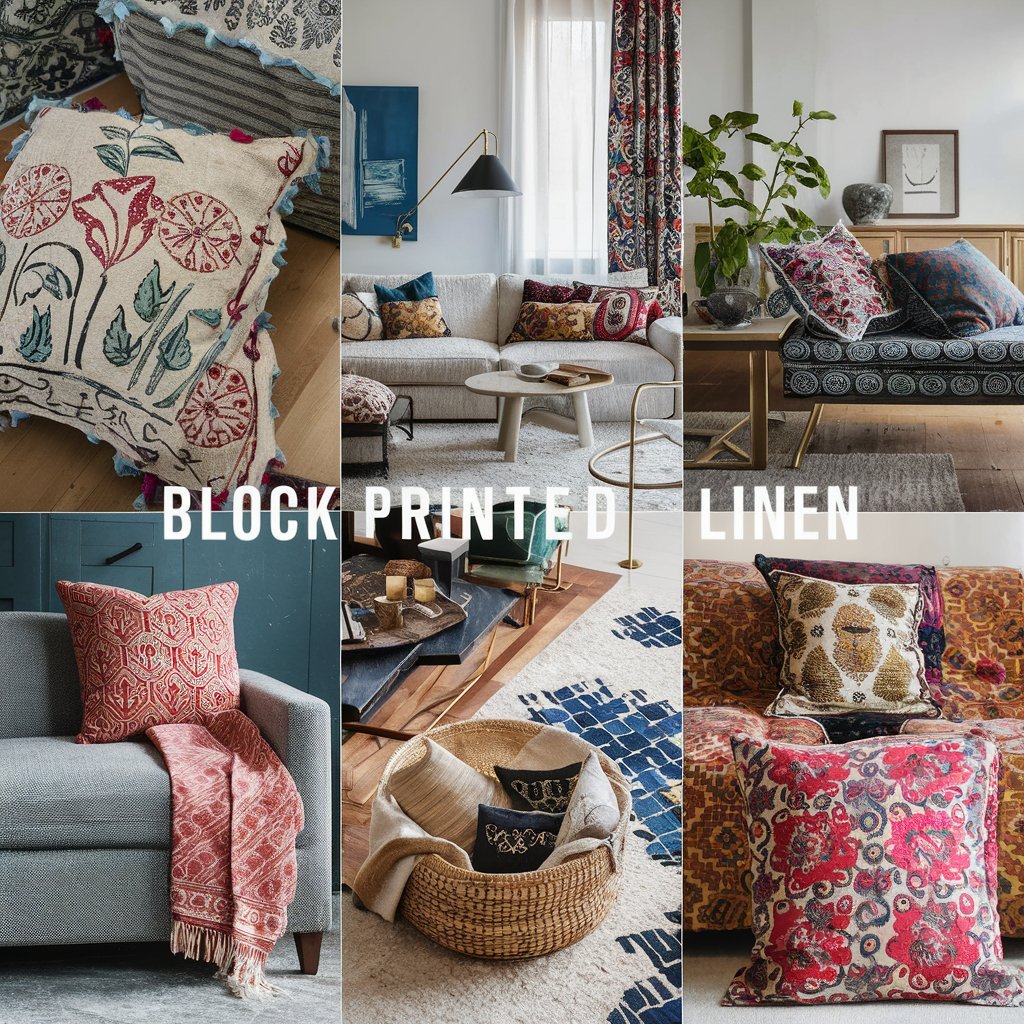Introduction to Hand Block Fabric Printing
Hand block fabric printing is an ancient art form that connects us to our past through patterns and color. Imagine artisans meticulously carving intricate designs onto wooden blocks. They then dip these blocks into vibrant dyes and stamp them onto fabric, creating stunning patterns. This technique, originating from places like India and Japan, has been passed down through generations. It's not just about making fabric; it's a storytelling medium, capturing motifs that symbolize nature, mythology, and everyday life. While it might sound simple, the precision and skill required are immense. Each piece of fabric becomes a unique work of art, reflecting the individuality of the artisan and the rich cultural heritage behind the craft.

The Historical Roots of Hand Block Fabric Printing
Hand block fabric printing, a technique admired for its intricate designs and vibrant colors, has a rich history tracing back to ancient times. Originating in China around 220 AD, this craft spread to India, becoming a significant part of the country's cultural and artistic heritage, especially in regions like Rajasthan and Gujarat. By the 12th century, hand block printing had flourished in India, supported by the rise of the Mughal Empire, which deeply admired and promoted this art form. The technique involves carving intricate patterns on wooden blocks, which are then dipped in dye and stamped onto the fabric, a process requiring immense precision and patience. This traditional method was not just about creating beautiful textiles; it represented a deeper connection between art and nature, with dyes derived from plants and minerals. Over centuries, hand block fabric printing evolved but remained true to its roots, continuing to be a symbol of craftsmanship and cultural expression.
The Tools of the Trade: Blocks, Dyes, and Fabrics
To understand traditional hand block fabric printing, you've got to start with the essentials: blocks, dyes, and fabrics. The blocks are essentially hand-carved pieces of wood, each one boasting its unique pattern. Artists take time to carve these by hand, ensuring each detail is perfect for printing. Now, the dyes — they're natural, pulled from sources like plants, minerals, and even some insects. These dyes give the fabric those vibrant, earthy tones you can't help but admire. Lastly, the fabrics. Typically, printers use cotton or silk because they take up the dyes well and showcase the intricate designs. Put all three together, and you've got the traditional process of hand block fabric printing, a craft that's as much about patience and skill as it is about the tools of the trade.
Preparing the Fabric: The First Step in Hand Block Printing
Before the magic happens with the colorful patterns and designs, the fabric needs to be prepared. This is a crucial step in the hand block printing process. First, the fabric, often cotton or silk, is washed to remove any impurities and starch. This ensures the fabric is clean and ready to soak up the dye. Next, the fabric is soaked in a mixture of water, oil, and other natural ingredients. This mixture helps to soften the fabric, making it more receptive to the ink during the printing process. Once the fabric has dried from this soaking, it's stretched out smoothly on a flat surface. This is to make sure that when the block comes down, it hits an even surface, allowing the design to transfer cleanly and crisply. Think of the fabric preparation as laying a flawless canvas before painting; it's all about getting the basics right for the masterpiece to emerge.
The Art of Carving Blocks: A Detailed Look
The process of making those prints starts with carving blocks. Skilled artisans take a piece of wood and turn it into a printing block that will stamp fabric. Think of it like a big rubber stamp, but way cooler and more intricate. The type of wood matters; they often use hardwood because it's tough enough to handle the pressure and doesn't wear out easily. The design gets sketched on the block first. This part needs a steady hand and a sharp eye for detail because once they start carving, there's no going back. Using chisels, gouges, and sometimes even simple tools they've made themselves, artisans carve out the design. It's like they're removing all the parts of the wood that are 'not the design', leaving the raised parts that will hit the fabric. Every time they make a mistake, they might need to start over with a new piece of wood. So, precision is key. Then, it's all about the print. The carved block gets dipped in dye and then pressed onto the fabric. Each color means a different block, so more colors mean more blocks and more time. It's a slow dance of applying pressure, lining things up perfectly, and building the design layer by layer. The result? Fabrics that tell stories, patterns that have been the same for centuries, and a piece of tradition you can hold. This isn't just printing; it's keeping history alive through every press and every color.
Mixing Dyes: The Color Science in Fabric Printing
In hand-block fabric printing, mixing dyes is an art as much as it is a science. It demands precision and an understanding of how colors work together. Before the printing starts, artisans prepare the dyes. Most often, they use natural sources for colors — think indigo for blues, madder root for reds, and turmeric for yellows. The process begins with mixing these natural elements with a binder to ensure the dye fixes to the fabric without bleeding or fading.
The real magic happens when these natural pigments merge. It requires a deep understanding of color theory. For instance, to get a perfect green, an artisan doesn't just mix blue and yellow randomly. They consider the shade of blue and the intensity of yellow, adjusting proportions until the exact desired green emerges. This meticulous process ensures the final print presents vibrant, long-lasting colors that tell a story of the centuries-old tradition.
Remember, the skill of mixing dyes isn't just about following a recipe. It's about adjusting, experimenting, and sometimes even embracing the unexpected. This approach allows for the creation of unique shades that make hand-block fabric printing not just a technique, but an exploration of color and creativity.
The Hand Block Printing Process: Step by Step
First things first, let's make sure you're clear on what hand-block printing is. It's an ancient technique used for printing patterns on fabric. This method uses carved wooden blocks dipped in dye, then stamped onto the fabric. Simple, right? But it's an art that takes skill and patience. Here's a breakdown of the process, step by step.
1. Creating the Design: Everything starts with a design, usually nature-inspired motifs or geometric patterns. Artists sketch these designs on paper before the real magic begins.
2. Preparing the Blocks: Next, skilled artisans carve the design into wooden blocks. Each color in the design needs a separate block. This part demands precision.
3. Preparing the Fabric: Before printing can start, the fabric needs to be washed and bleached to remove any impurities. This ensures the colors stick well.
4. Dye and Color Mixing: The dyes used are often natural, derived from plants and minerals. The right shades are mixed with care.
5. Printing the Fabric: Here's where the fun begins. The carved block is dipped into the dye and then stamped onto the fabric with a firm hand. It's repeated, aligning each stamp with the next, to create a continuous pattern. Imagine it as pressing a stamp onto a letter but with a lot more care.
6. Drying and Finishing: Once the fabric is printed, it's left to dry, which can take hours or days depending on the weather. Sometimes, it might go through a final wash to remove any excess dye and to set the colors.
Each step of the hand block printing process needs a steady hand and a keen eye. It can take years to master. This age-old technique offers not just fabric, but stories woven into each pattern, each color. Watching a piece come to life from a simple wooden block and some dye is nothing short of magical.
Finishing Touches: Washing and Drying
After the fabric has been printed with the beautiful designs, it's not ready just yet. It needs to pass through the final but crucial steps: washing and drying. First, the fabric is washed. This step is key to removing any excess dye and ensuring the colors are set properly into the fabric. The washing is often done by hand in cold water to keep the colors from running. Now, drying comes into play. Traditionally, the fabric is laid out to dry under the sun. It's not just about getting it dry; the sun plays a role in brightening the colors and giving the fabric its final, vibrant look. It's a simple process but vital to making sure the fabric looks its best and lasts long.
Evolution and Variations of Hand Block Fabric over Time
Hand block fabric printing is a craft with deep roots, tracing back centuries, primarily found in regions of India and Asia before sweeping across the globe. Its evolution is a tale of cultural exchange, innovation, and adaptation. Initially, artisans used natural dyes extracted from plants, minerals, and even insects to create vibrant designs on fabrics. However, as time marched on, synthetic dyes were introduced, offering a wider palette and greater consistency in color.
Throughout history, various regions have developed their distinct styles and motifs, influenced by local traditions, flora, fauna, and mythology. For example, Rajasthan in India is famous for its intricate floral and geometric patterns, a hallmark of its rich cultural heritage. Similarly, in Japan, the Katazome and Yuzen techniques provide their unique takes on block printing, focusing on precision and the harmonious blend of colors.
Today, hand block fabric printing encompasses a broad spectrum of variations, each with its own identity but sharing a common thread of meticulous craftsmanship. These include:
- The use of different materials for blocks, including wood, metal, and even potato cuts for simpler designs.
- Varied techniques such as the direct or resist-dye method, which either adds the color directly onto the fabric or blocks areas from dyeing to create patterns.
- Innovative designs that blend traditional motifs with contemporary themes, reflecting global trends while staying rooted in historical significance.
The evolution of hand block fabric is not just about the diversification of techniques and designs but also about the perseverance of artisans who keep this ancient art alive. It symbolizes resilience, creativity, and the everlasting human desire to express oneself through art.
Preserving the Tradition: The Future of Hand Block Fabric Printing
Hand block fabric printing holds a timeless charm, reminding us of an era where every print told a story. Today, this ancient craft faces the challenge of surviving in a digital world. But, there's hope. More and more people are seeking unique, handmade items over mass-produced goods. This shift is key to preserving the tradition of hand block printing. Artisans are now blending traditional techniques with contemporary designs, attracting a broader audience. Workshops and live demonstrations are bringing the magic of this craft closer to people, sparking an interest in learning and preserving these skills. Supporting local artisans by buying hand block printed items is a powerful way to keep this art form alive. By valuing the work and the history behind each piece, we contribute to a sustainable future for hand block fabric printing. In a nutshell, the future of this craft depends on our appreciation and support. Let's cherish and keep the tradition of hand block printing thriving for generations to come.
FAQs
1. What is hand block fabric printing?
Hand block fabric printing is a traditional technique where artisans use carved wooden blocks to print intricate patterns on fabric. Each block is dipped in dye and pressed onto the fabric by hand, creating unique designs.
2. What materials are used in hand block printing?
The materials typically include wooden blocks, natural or synthetic dyes, and fabrics such as cotton, silk, or linen. The blocks are carved with precision to create detailed designs.
3. Is hand block printing eco-friendly?
Yes, hand block printing is considered eco-friendly, especially when natural dyes and sustainable fabrics are used. It is a slow, manual process with minimal environmental impact compared to industrial printing methods.
4. How durable are hand block-printed fabrics?
Hand block-printed fabrics are durable when properly cared for. Use mild detergents, wash in cold water, and avoid direct sunlight for prolonged periods to maintain their quality.
5. Are hand block-printed fabrics colorfast?
While artisans use techniques to ensure colorfastness, some slight bleeding may occur during the first few washes, especially with natural dyes. Washing separately in cold water helps preserve the colors.



